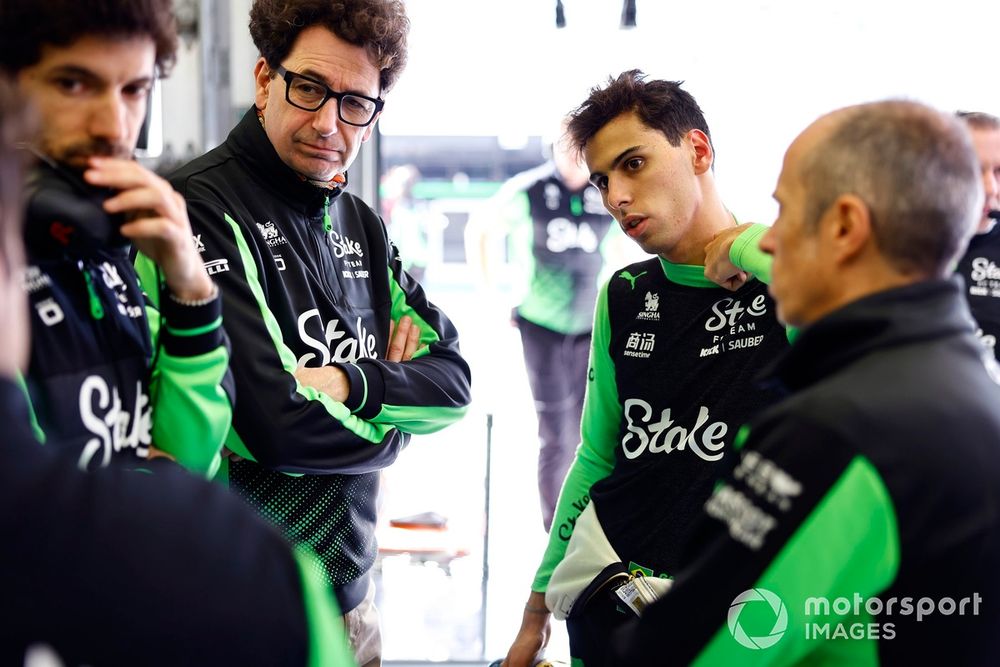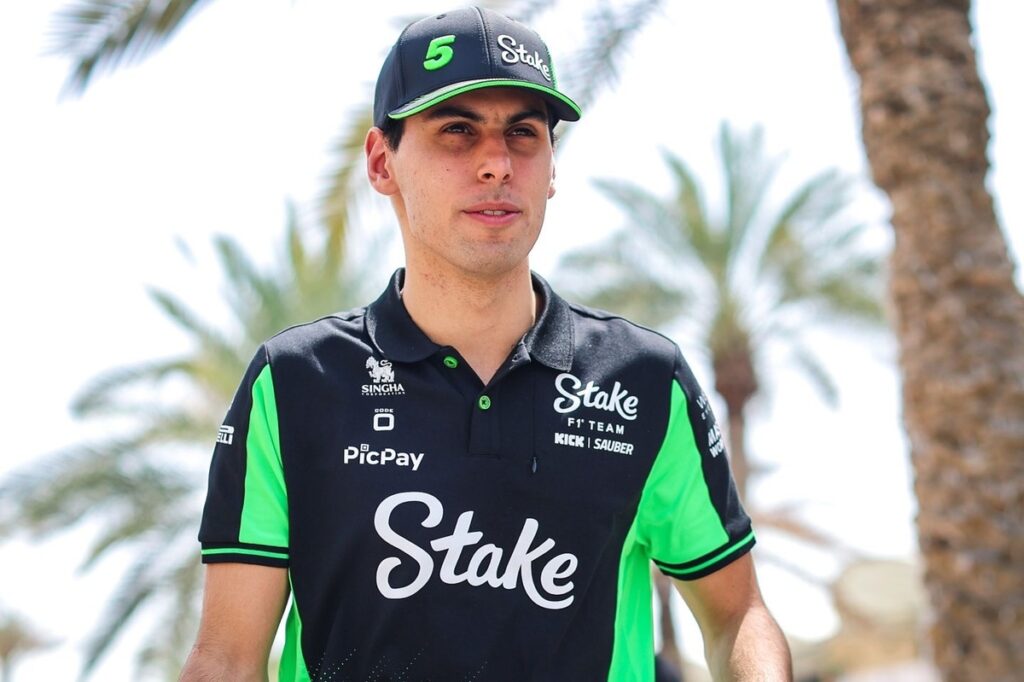Unless you’re flying by private jet there’s no direct flights to Bahrain from Japan’s main airports. Sauber’s Gabriel Bortoleto added to what was already a complicated itinerary between the opening rounds of 2025’s first triple-header by going to the factory.
It’s a telling insight into how the Formula 2 champion aims to avoid the trough into which several of his predecessors have fallen. For every Lewis Hamilton who has graduated with honours from the feeder formulae into a top seat, there are several Giorgio Pantanos (and many more nearly men) who joined Formula 1’s midfield and sank into anonymity. The previous two F2 champions, Theo Pourchaire and Felipe Drugovich, are yet to do anything but test an F1 car.
For Bortoleto the transition has been particularly abrupt: his progress over the past two seasons has been so stellar that it was effectively F1-or-bust for him at the end of last year, hence his exit from McLaren’s young driver programme since that team had no vacancies. But Sauber is a team which has long struggled to achieve escape velocity from the back of the grid.
From winning two races and claiming six other podiums in F2 last year, Bortoleto has so far notched up one DNF, a 14th and a 19th in F1, though making it through to Q3 twice has been a positive given that Sauber was welded to the back row of the grid last season. In Australia he outqualified his vastly more experienced team-mate Nico Hulkenberg but then became one of six drivers to spin off in the wet race conditions.
In China he outqualified Hulkenberg in the sprint but was nerfed by Jack Doohan on the last lap, then finished ahead of his team-mate in the race; but at Suzuka he made a poor start which consigned him to a humble finishing position in a race where overtaking was almost impossible. He took responsibility for the slow getaway, explaining that he wasn’t “aggressive” enough with the clutch and that he had already learned from it.
Given Hulkenberg’s reputation for squeezing one-lap pace out of a car, outqualifying him more than once is impressive. Nevertheless for many rookie F1 drivers in Bortoleto’s position, life as a backmarker inevitably pushes them towards a motivation-sapping slough of despond in which they remain trapped.
Nico Hulkenberg, Kick Sauber, Gabriel Bortoleto, Kick Sauber
Photo by: Sauber
“It’s very tough, if I’m honest,” he said when asked by Autosport about how he was making this adjustment. “It’s tough because I come from two very good years in my life, where I won F3 and F2.
“But at the same time, I have very clear [in mind] the project I have ahead of me. I didn’t come to Formula 1 thinking I would be straight away fighting for race wins or podiums.
“I’m not here to be last, I’m not here to be P10. I’m here to try to win, like everyone else. But in my mind, I need to also accept the position we are in now. Because as soon as you start going into this loop of being too harsh on yourself or upset because you are not able to do that, I think you start performing worse and worse.
“You just need to extract everything you have from what you have now.”
Bortoleto is well advised by a management group which includes Fernando Alonso. He will know that simply marking time until Audi’s investment in Sauber yields a miraculous competitive turnaround isn’t a realistic option.
The project is already misfiring and running behind schedule, and Audi has attempted a reset by firing the previous management and installing ex-Ferrari boss Mattia Binotto as chief operating officer and chief technical officer, and former Red Bull sporting director Jonathan Wheatley as team principal.

Gabriel Bortoleto, Sauber, Mattia Binotto, Sauber
Photo by: Andy Hone / Motorsport Images
Word in the paddock is that Binotto very quickly realised there was much more in need of fixing than expected, hence he has ensconced himself at the factory and Wheatley jumped straight into his new trackside role last weekend.
For Bortoleto the priority is to take control of all aspects of car performance that are under his influence: no miracles required, just maximise the potential of the car on any given race weekend and be a positive influence on development between races. Hence his detour to Hinwil and back.
“I have a big problem,” he said. “When I don’t sleep, I think a lot. So I went flat out sleeping on the first flight. And then in the second flight, I spent like three, four hours awake. I was looking out the window of the plane and I was thinking, ‘I can go home now and just relax or I can do something useful and go back to the team’.
“So when I landed, actually Mattia [Binotto] called me to speak. He wasn’t in Japan, so he wanted to know how the weekend went and discuss some topics.
“And I asked him, do you think it’s positive to come back to the factory to talk to the team? And he said, ‘Absolutely, it’s very good, and we’re going to be super happy if you’re here’.
“So it was very positive because I managed to go to a lot of departments, talk to a lot of people, debrief a little bit our three first rounds of the season. I think it was the best decision to be done.”
Lance Stroll, Aston Martin Racing, Gabriel Bortoleto, Sauber
Photo by: Zak Mauger / Motorsport Images
The race team itself stayed on the road; the people Bortoleto was engaging with were all factory based. He described visiting the aerodynamics department and having “some good looks at the data to understand what’s working and not working on the car”.
While they will already have had access to all the data required, in-person contact still has greater potency than emails or video calls.
If the mountain will not come to Mohammed, then Mohammed must go to the mountain.
“Obviously we already had this data,” said Bortoleto, “but what they keep saying is that the driver is the best sensor that the car has. I have very clear the project ahead of me and that’s what motivates me a lot.”
In this article
Stuart Codling
Formula 1
Gabriel Bortoleto
Sauber
Be the first to know and subscribe for real-time news email updates on these topics
Subscribe to news alerts
Read the full article here

